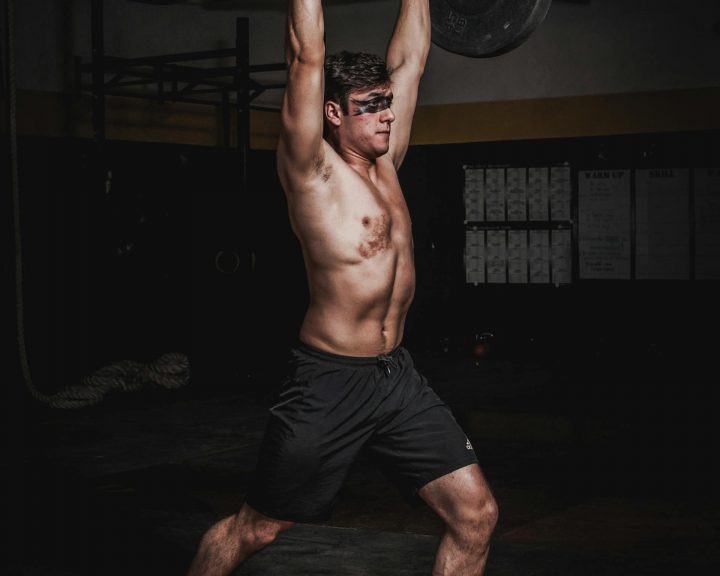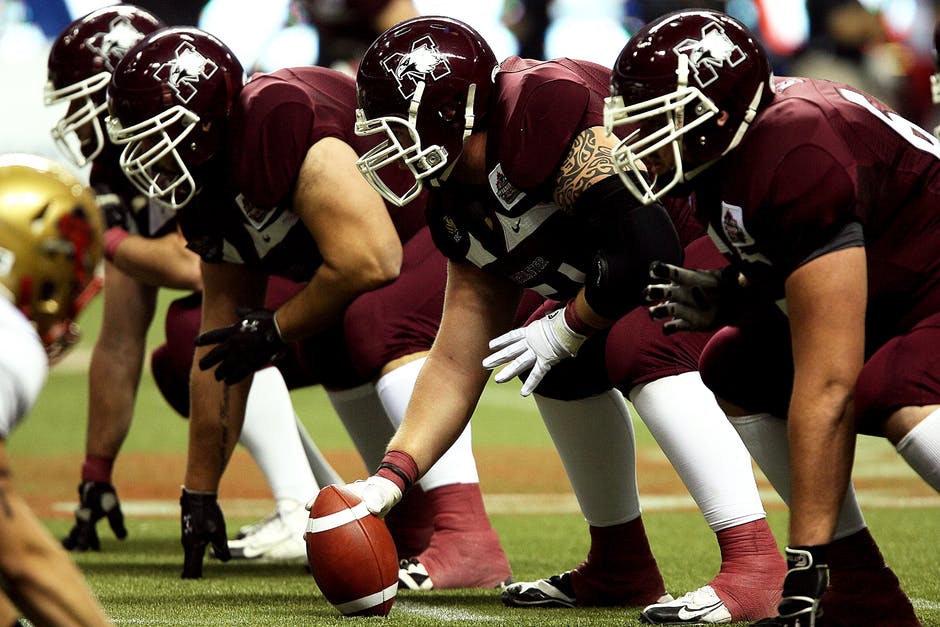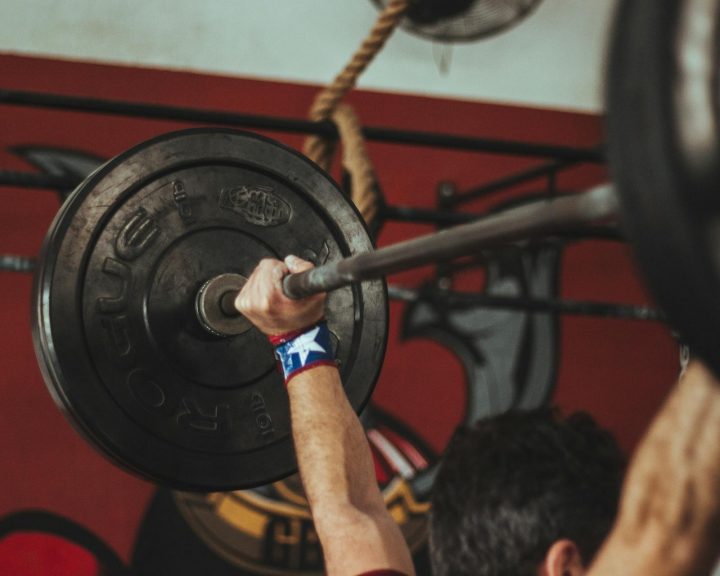The back squat is a fundamental exercise for an athletic strength and conditioning program. It develops lower body strength, does so in a manner that involves exerting force against the ground, and also requires the athlete to strengthen their trunk muscles to support the weight. A variation of the squat exercise that shows up in Olympic lifters programs, warm-up routines, and has gained popularity thanks to things like CrossFit is the overhead squat. This is a much more technical lift that involves performing the squat while the barbell is held overhead.
The overhead squat is a great mobility exercise. For obvious reasons, athletes cannot perform this exercise with as much weight as the back squat. It also has transfer to the full snatch, which is why it is used as a supplemental exercise by Olympic lifters. One of the reasons it is incorporated into athletic strength and conditioning programs is that having to hold the weight overhead may do a better job of developing the trunk muscles than the traditional back squat.
Aspe and Swinton, in the October issue of the Journal of Strength and Conditioning Research, studied this. They studied 14 elite rugby players, had them perform a 3-RM on the back squat and the overhead squat. The subjects had a 3-RM on the back squat equivalent to approximately 152% of their bodyweight and a 3-RM on the overhead squat equivalent to approximately 80% of their bodyweight.
On subsequent testing sessions, the authors performed several tests:
- They tested the subjects at 60%, 75%, and 90% of their 3-RM back squat and 3-RM overhead squat (two reps at each condition) and took electromyographic (EMG) measurements to determine muscle recruitment of the anterior deltoids, rectus abdominus, external obliques, erector spinae, as well as lower body muscles.
- The subjects were also asked to perform a number of traditional core exercises (like the straight leg sit-up and front plank) to serve as a comparison to the squats.
- The subjects also performed the back squat with the same absolute load used at 90% of the overhead squat 3-RM.
Results:
- The abdominal exercises did a better job recruiting the rectus abdominus and the external oblique than the squats.
- At 90% of 3-RM, the back squat and the overhead squat were more effective at recruiting the erector spinae than the trunk exercises.
- As the weight progresses on the back squat from 60% or 3-RM to 90% of 3-RM, so does the recruitment of the erector spinae. The other muscle groups studied (anterior deltoid, rectus abdominus, external oblique) were not recruited more with increasing weights.
- As the weight progresses on the overhead squat from 60% of 3-RM to 90% of 3-RM, the recruitment of the anterior deltoid and the erector spinae increased. During the eccentric phase of the lift, there was a trend towards increased recruitment of the rectus abdominus and the external obliques, though this wasn’t really present during the concentric parts of the lift.
- In terms of anterior deltoid recruitment, the overhead squat had an average integrated EMG that was between 148% and 451%g greater than the back squat.
- For the rectus abdominus, the overhead squat had an average iEMG that was between 13% and 58% greater than the back squat. The eccentric phases of the lift saw greater separation between the overhead squat and the back squat, with those values being 49%-58% greater depending upon the loading condition.
- For the external oblique, the overhead squat had an average iEMG that was between 3% lower to 68% greater than the back squat depending upon the loading condition. Again, the eccentric phases of the lift had an iEMG for the external obliques that was between 36% and 68% greater than the back squat depending upon the loading condition.
- The back squat was more effective at recruiting lower body muscles (gluteus maximus, vastus lateralis, biceps femoris, and lateral gastroc) than the overhead squat across all loading conditions studied.
- During the absolute load condition, the overhead squat was more effective at recruitment of every muscle group studied.
Based upon the results, it looks like there is validity to the assumption that the overhead squat requires greater involvement of at least the abdominal muscles, especially during the eccentric part of the lift. However, it is not as effective at recruitment the erector spinae or the lower body muscles. It appears that a lot of the differences in lower body/erector spinae muscle recruitment patterns has to do with the fact that the back squat is going to involve heavier weights than the overhead squat.
Despite the differences between the two squat variations in terms of abdominal muscle recruitment patterns the authors recommend sticking with the back squat to develop lower body strength and the erector spinae muscles while including core exercises to develop the abdominal muscles.
It is difficult to train with extremely heavy weights on the overhead squat. It is a very technical exercise, requires a certain mental mindset, requires specialized bumper plates and an area where they can be dropped, and there is a chance of injury from this lift. While the exercise does appear to be more effective at recruiting the abdominal muscles than the back squat, it does not appear that the return is worth the time investment for most athletes.
For the Olympic lifter, this exercise makes sense as a supplemental exercise but in one important way it is very unlike the snatch lift that it is attempting to train. While it strengthens the snatch movement, it is performed very slowly which allows time to correct for subtle technique errors. This condition does not exist during the snatch.
Aspe, R.R. and Swinton, P.A. (2014). Electromyographic and kinetic comparison of the back squat and overhead squat. Journal of Strength and Conditioning Research, 28(10): 2827-2836.



